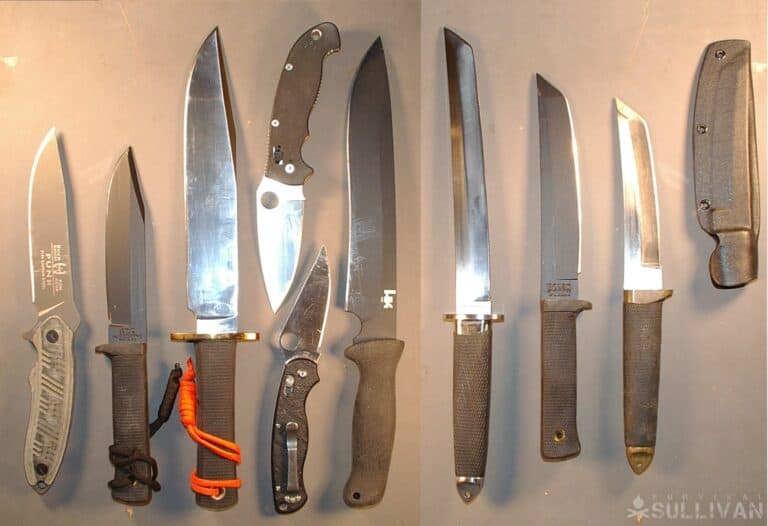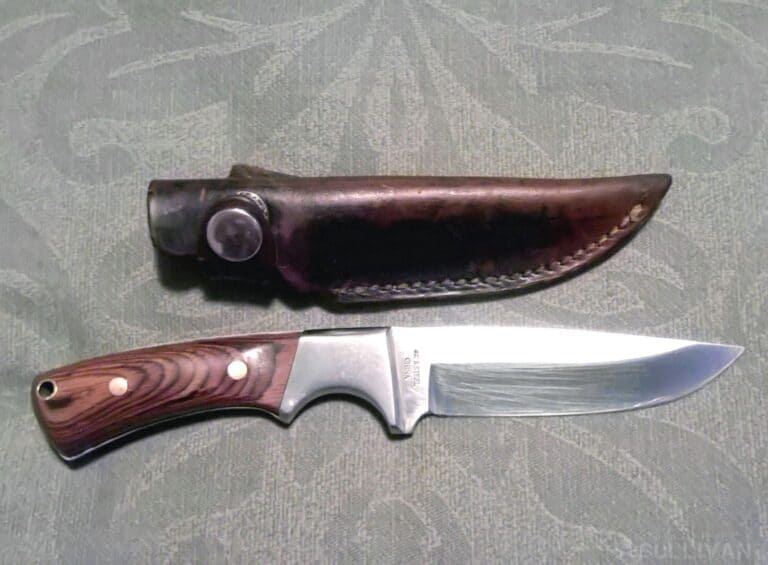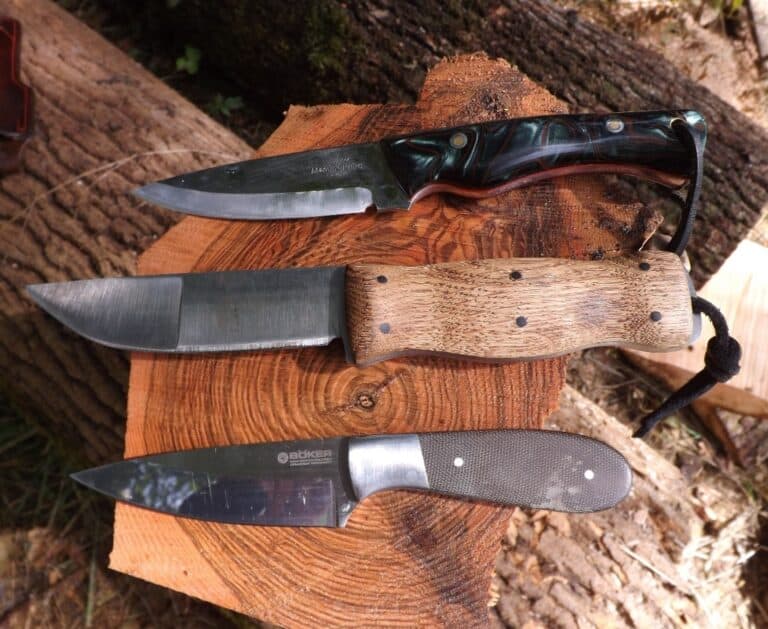For such a ubiquitous, everyday tool it is far from uncommon to experience sticker shock when assessing the prices of knives today.

From conservative folding pocket knives to elaborate, large, fixed-blade knives suitable for the battlefield or the backcountry, it is a simple thing to spend $75, $100 or even north of $200 on a production knife made by a major manufacturer.
Ouch! That is no small chunk of change for a tool that is going to get a rigorous workout, and potentially be broken or lost before it reaches the end of its life span.
There is little doubt you get what you pay for when it comes to working tools, but how did we get here? Was the knife market always this way? Why are knives so expensive?
The cost of a knife is determined by far more than just the quality of its steel, though that certainly is a factor. Design and revision costs, production tooling, quality control and, yes, branding all play a part.
In the case of bespoke knives designed by artisan makers and bladesmiths, costs include significant premiums for their time, expertise and failed iterations that you never see before your customized, finished blade is produced.
We will dig a little deeper and investigate all of these factors in the remainder of this article.
Steel
One of the major contributors to a knife’s cost is, of course, the steel it is made from. Almost any modern steel is a marvel compared to the primitive steel of years gone by, but suffice to say not all steels are made equal.
Cheap, budget-oriented steels can certainly get the job done with a knife, but they will not take a particularly sharp edge or keep that edge, and they might give up other qualities like corrosion resistance in the bargain.

On the other hand, the latest and greatest in advanced blade steel or high-end tool steel can afford you incredible strength, unbelievable durability, and hair-popping edges that will last and last even through rigorous use.
Sometimes you can face a fork in the road when buying a knife: You can get the exact same model, whatever it is, with one of several steel options.
Do you save some money but give up performance and get the knife with a budget steel like Japan’s AUS-6, or go all out and get an ultra-performance steel like M390 and double or even triple the price?
Design
There is nothing easy about knife design, and manufacturers great and small will go through many revisions before they settle on a finished product that is worthy of a customer’s hard-earned coin.
Aside from the R&D, testing, and revision processes that soak up budgetary funds like a sponge, the design of a knife will directly contribute to manufacturing costs.
Simpler designs typically require fewer machine or human worker processes before they are ready to go out the factory door, and more complex, intricate, or innovative designs require more of those same processes.
The more processes, the higher the cost, end of story. Also consider that a particularly simple knife that is made from premium materials, or materials that a manufacturer has convinced the consumer are worth a premium, might be significantly more expensive than its design suggests.

Conversely, an intricate and interesting knife could be offered for a surprisingly low price if the materials are cheap, easy to work with, and easy to come by.
Quality Control
Better manufacturers employ better quality control, and will throw away or reject many more knives and parts of knives then they give their stamp of approval to. All of that lost potential profit will drive up the cost of the products that do make it to market; they have to recoup their investment somewhere.
Before you roll your eyes at the notion of quality control, you should know that quality control is one factor that contributes just as much to the durability, longevity and user experience of a product, including knives, as does the materials, design and production processes.
You might not ever have a problem from a knife made by a manufacturer that pumps out cheaper knives in greater quantities, but chances are there will be plenty of consumers who will.
A remorseless dedication to quality control will only send product prices skyward, but so long as the price rates the manufacturer’s attention to detail it is money well spent.
“Boutique” Knife Costs
Considering the edge, pardon the pun, that we enjoy in manufacturing throughout first world nations, it seems like something of an anachronism when you can find old school bladesmiths cranking out knives one at a time, not too far removed from the processes of our ancestors.
From hand forging and shaping to tempering, finishing, sharpening and even producing the scales or handle slabs, some knife makers are uniquely responsible for every single part of the production process when it comes to their bespoke products.
If they are skilled, their knives will command a substantial premium over their nearest competing mass production counterparts, no matter how good they are. Why? Simply put, you are paying for a premium product produced solely by an artisan of the craft.
The price of the knife is often factored into the reality that many of these knife makers produce their knives as their sole source of income. This is how they put food on the table for their family, and keep the lights on in their business.
Is also reflected in the years of study, apprenticeship, trial-and-error, and ceaseless effort that has brought them where they are in that craft. All admirers of knives lust over and desire these remarkable blades, but few are willing to pay the price for them.
Why Are Pocket Knives So Expensive?
A high quality pocket knife will be reflected in its cost, with top of the line models featuring a high price tag. Creating a knife can be tedious labor as the design needs to be tested in a variety of conditions before being refined and sold to the public.
Manufacturing costs and where they are made are also a large factor. Material costs can fluctuate and if they are made close to home then it will be more expensive to produce. Purchasing knives made in foreign countries with cheaper labor is easily shown in the resulting price.
Knife brands play a large role in the cost for the consumer. A knife from a well recognized brand will almost always have a higher price tag then those from lesser viewed companies, even if the cheaper model is made with high-quality materials.
Why Are Benchmade Knives So Expensive?
Another case of high-end knives with an expensive brand name attached to it. They have knives for every occasion including high-quality cutlery and sharp knives for your everyday carry. Not only can you use them for survival means, but also to cut your vegetables for dinner.
Most of the Benchmade knives are manufactured in America, this ensures quality and that the materials are not imported from other countries. This is why they provide a lot of the knives for the military and police forces across the country.
On top of the quality, their customer service is top notch. This is immediately indicative in the ease of navigation throughout their website. They can help you find a custom knife that fits your needs through their question oriented knife finder.
All of these factors are included in their knife costs and explain how a brand can really increase the cost of your purchases. I dissect the production costs of Benchmades in detail here.
Why Are Case Knives So Expensive?
Case knives can cost a lot of money because they are made locally in the United States instead of abroad. With an incredible fit and finish, they make the perfect dressing knife, rather than a utility blade.
This is due to the thin blade that can be quite flimsy for certain tasks. You’ll seldom get dull knives with these as they generally come pretty razor sharp out of the box.
In order to create such high-quality knives you need better quality equipment and hard steel.
These costs of course get translated into the final purchase price. A knife manufacturer with good equipment will always produce a better blade than those without, regardless of the skilled salespeople you have employed.
Why is Damascus Steel So Expensive?
These interesting knives are forged with a variety of metals – all molded together. The difference between these metals are what give Damascus steel it’s distinct swirling patterns. The quality of the knife will be based upon the quality of the metal used.
Since these knives have anywhere between 300-500 layers of metal they are quite laborious to create, even for a single knife. You’ll want to use a diamond whetstone to sharpen these knives as a cheaper material can cause issues with the apex.
Why are Japanese Chef’s Knives So Expensive?
A professional chef will use a Japanese knife in the restaurant for slicing and other kinds of prep. These blades are so sharp that they are more akin to swords than knives.
They usually come with a lifetime warranty and a guarantee to cut anything or they’ll send a replacement. With this kind of warranty backing it up you can see why these can be considered one of the most expensive knife types you can buy.
Conclusion
The price of quality, modern knives might surprise you considering how plentiful they are, but there is far more that goes into the design, production and finishing of these handy blades then you might be thinking.
The quality of the steel, intricacy of the design, and difficulty of production along with quality control processes all directly contribute to the bottom line.

Tom Marlowe practically grew up with a gun in his hand, and has held all kinds of jobs in the gun industry: range safety, sales, instruction and consulting, Tom has the experience to help civilian shooters figure out what will work best for them.

Great article. I showed it to an old friend who does custom knife work for a living. He only pointed out that an increasing number of his orders seem to e for very specific Damascus combinations of metals, some of which do not actually successfully bond no matter what tricks you use. He also pointed out that orders waned as the desert wars waned, then picked up again last year.
I’ve noticed that the price of knives have increased in price over the year. Knives that I used to get from benchmade, kershaw, Crkt and some other no-name companies have jacked up the price of their knives to some ridiculous prices. I’ve had my U.S. Army short fighting knife for over 25 years and a couple of other knives, but with prices these people are charging now they will most likely be the only knives I’ll ever own. I will never pay the prices they are asking for.?